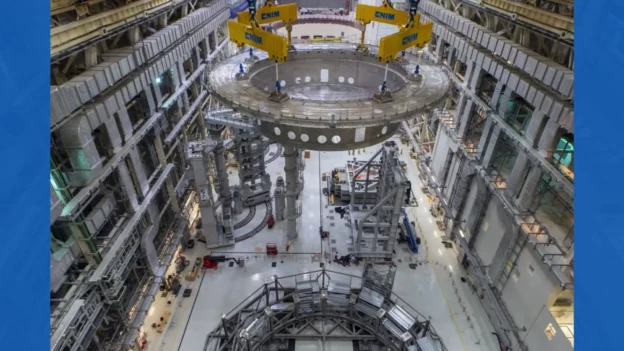A new study from the U.S. Department of Energy’s Princeton Plasma Physics Laboratory has found a viable measure of fusion energy production.
Scientists have successfully simulated the combination of two methods, electron cyclotron current drive ( ECCD ) and the application of resonant magnetic perturbations ( RMP ) , to improve the stability and control of fusion plasma.
How do the two methods for producing Fusion energy work?
The combination of ECCD and RMP offers greater flexibility and control over the plasma . The ECCD is used to maintain the plasma current, while the RMPs introduce small controlled magnetic disturbances .
The study demonstrates the potential of this combined approach to reduce plasma edge localized modes (ELMs), which can damage the device. ELMs are bursts of particles that can cause the fusion reaction to end.
The key to success lies in the application of ECCD microwave beams in the same direction as the current. This reduces the current needed to generate the necessary RMPs to create the desired magnetic islands in the plasma.
A unique fusion energy opportunity
” People think that applying localized ECCD at the edge of the plasma is risky because the microwaves can damage the components inside the vessel ,” said Qiming Hu, lead author of the study. “We have demonstrated the feasibility and flexibility of the method. This could open new avenues for the design of future devices“he concluded.
If this technique can be implemented in fusion devices on a commercial scale , the production of fusion energy could be reduced and our dependence on fossil fuels minimized. This would help mitigate the effects of climate change and move towards a more sustainable future.
Follow us on social networks and don’t miss any of our publications!
Inspenet.com YouTube LinkedIn Facebook Instagram X
Source and photo: Popular Mechanics

